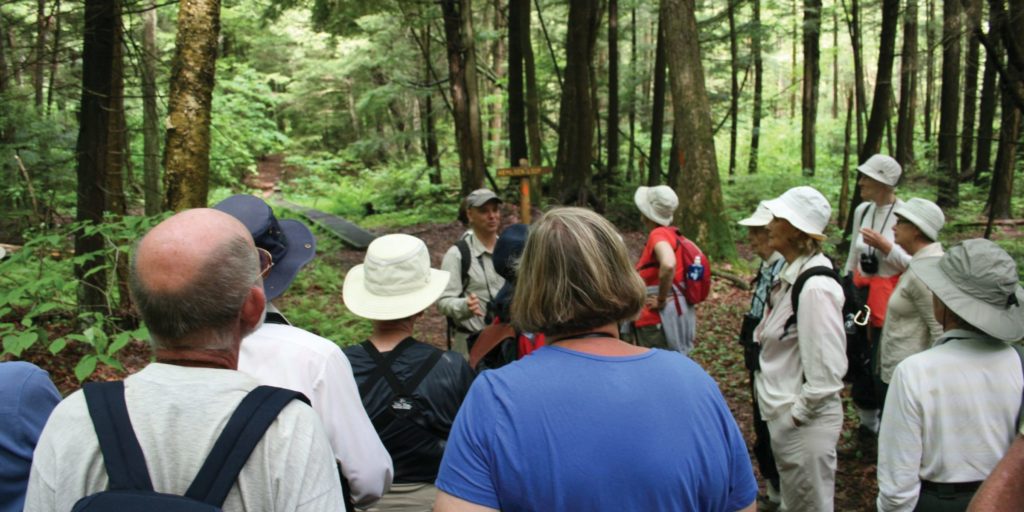Ontario Nature Blog
Receive email alerts about breaking conservation
and environmental news.
© Lora Denis
Cootes Paradise, Dundas Valley © CC BY-NC Jim Smith
On a May evening, while world powers were settling issues in Europe, a small group of bird lovers invited Hamiltonians to a meeting and perhaps form a club to “protect birds from boys, cats and English sparrows.”
Membership in the Hamilton Bird Protection Society grew quickly. Many people loved birds and were concerned with declining bird numbers. Almost from the start, the ambitious group advocated for the Cootes Marsh as a bird sanctuary. Owen Merriman, the society’s first President, was a nationally recognized bird expert who wrote pamphlets for the federal government on feeding birds. After a number of years, he along with persistent members were successful in having this precious wetland permanently preserved. And so began a long list of accomplishments for this Society that eventually grew into the Hamilton Naturalists’ Club.

Then as now, we understood that youth need the opportunity get involved in nature projects. In the first year, the Society started Junior Audubon Bird Clubs that saw 273 clubs in 45 area schools with more than 8,000 members. By 1938, 1,436 clubs had more than 26,000 members. Club membership declined during the Second World War and in the decades after.
But in 1979, the club, with President Bob Curry at the helm, started the Junior Naturalists’ Club. It continues today at the Royal Botanical Gardens. Some years ago, Jen Baker, our Land Trust Manager, started working with downtown Hamilton schools to take children to our Amaolo Sanctuary in Jerseyville. Now called GO (Get Outside) Explore, it’s a very popular program. For many young people, it’s their first taste of experiencing and working in a fresh, wild outdoors environment.
During those decades that youth membership was declining, new threats to nature were rearing their heads. The Cold War years saw huge changes in agricultural practices and the threats of pesticides, monoculture, loss of habitat, and urban sprawl. We realized that the changing governments could not be the solely responsible for wild lands. Even the term “conservation” meant holding undeveloped lands like Crown lands, conservation areas, or parks as natural resources for human consumption in future years.

Hamilton Naturalists’ Club and others saw a need to preserve lands for wildlife and so we bought our first sanctuary, Spooky Hollow, on the Norfolk Sand Plains in 1961. Ray Lowes, who was a visionary HNC Conservation Director, wrote to the Federation of Ontario Naturalists in 1959 proposing a trail along the entire Niagara Escarpment which became the Bruce Trail Conservancy, “a ribbon of wilderness for everyone forever.” Since 1961, the HNC has supported many groups across Ontario that have acquired lands for preservation. HNC now has six fully owned sanctuaries and two that we manage, including the new Hayesland Swamp Nature Sanctuary purchased in this, our 100th year.
In the first few decades, the club grew by offering fascinating lectures with scientists and experts from far and near, slide and film evenings, bird outings and even recitals. We have suffered some setbacks but through the years, we’ve kept our goals to educate and foster public interest in nature, preserve lands and advocate for nature and environmental protection.

We network with other clubs through Ontario Nature and with like-minded groups like Environment Hamilton that we’ve partnered with on the Pollinator Paradise and Trees Please projects. We work with the Conservation Authorities in Hamilton and Halton. We continue to offer speaker series through our Bird Studies Group and more diverse nature subjects at our general meetings. We offer free nature outings. Please come out to our events, bring a friend and think about joining this wonderful organization that is proud of its past and looking forward to meeting the challenges of helping nature around us.
Gananoque Lake Nature Reserve © Smera Sukumar